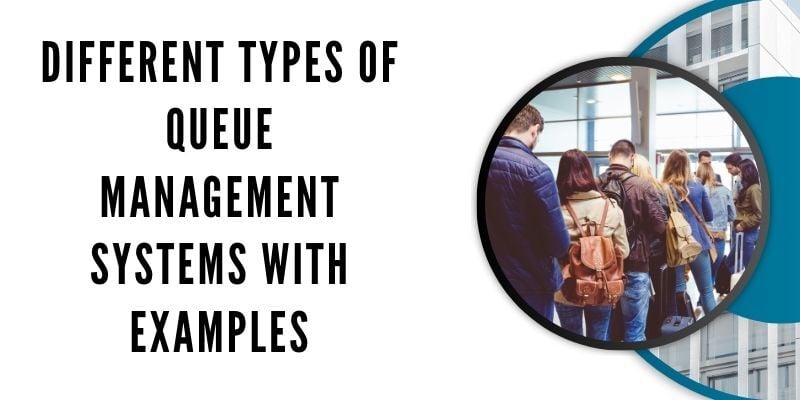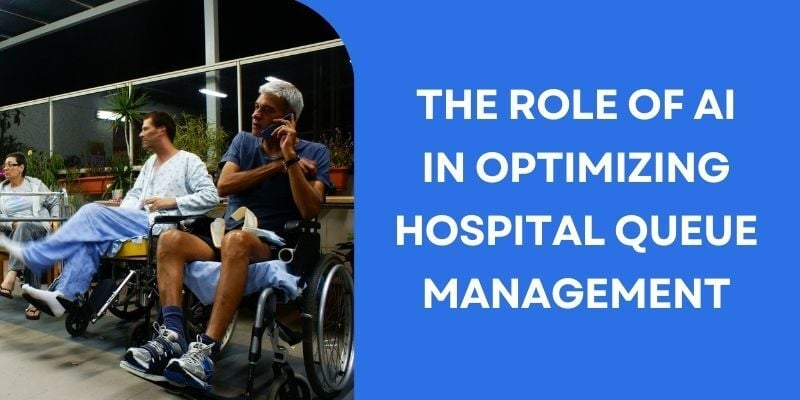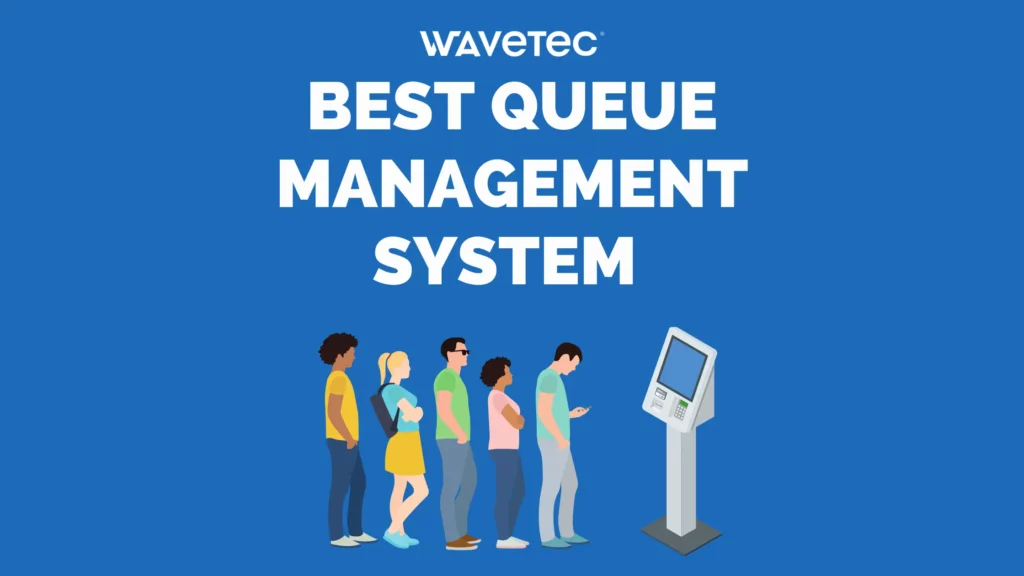In the quest to deliver exceptional customer experiences and optimize operational efficiency, businesses are turning to queue management systems.
These intelligent solutions offer a host of benefits that revolutionize waiting experiences, elevate customer satisfaction, and streamline operations.
By leveraging cutting-edge technology, queue management systems effectively organize queues, reduce waiting times, and enhance customer flow, not just this the benefits of queue management systems are endless, as we will explore ahead.
With features like digital signage, virtual queuing, and real-time analytics, businesses can improve service delivery, optimize staff allocation, and gain valuable insights into customer behavior.
In this article, we explore the remarkable advantages of queue management systems and how they empower businesses across diverse industries to stay ahead of the competition.
6 Benefits Of Waiting Line Management System
Effortlessly manage waiting lines and delight customers with a Waiting Line Management System. Bid farewell to lengthy queues and welcome a seamless, organized customer experience.
We will explore the detailed advantages of queuing system, revolutionizing your operations and elevating customer satisfaction.
- Streamlining Customer Experience
- Optimizing Operations
- Upselling And Cross-Selling Opportunities
- Improved Conversion Rates
- Scalability And Flexibility
- Data Security and Privacy
1. Streamlining Customer Experience
A Waiting Line Management System streamlines the customer experience by effectively reducing wait times, leading to enhanced customer satisfaction. With this smart solution in place, businesses can bid farewell to long queues and create a seamless flow for their valued customers.
By optimizing the queue management process, customers spend less time waiting, resulting in increased efficiency and happier customers. The system intelligently allocates resources, ensuring that staff members are utilized effectively and queues are managed efficiently.
The reduced wait times contribute to a positive customer perception of the business, fostering loyalty and repeat visits.
Ultimately, the benefits of queuing system are a win-win situation, benefiting both the customers and the business by providing a smoother, more enjoyable experience.

2. Optimizing Operations
A customer queuing system offers significant benefits by optimizing operations and enhancing overall efficiency. It enables businesses to allocate resources more efficiently, ensuring that staff members are utilized effectively and productivity is maximized.
By implementing a customer queuing system with People Counting capabilities, businesses gain valuable insights into customer traffic patterns, enabling them to make informed decisions about staffing and resource allocation.
The system streamlines the queuing process, improving staff performance and reducing bottlenecks. With enhanced operational efficiency, businesses can deliver a seamless customer experience, leading to increased customer satisfaction and loyalty with excellent customer feedback.
The benefits of a customer queuing system extend beyond reducing wait times; they empower businesses to optimize their operations and achieve excellence in customer service.
3. Upselling and Cross-Selling Opportunities
One of the key benefits of a waiting line management system is the opportunity it provides for upselling and cross-selling. Businesses can leverage this time by efficiently managing customer queues to engage with customers and present additional products or services.
Whether through digital signage, interactive displays, or even WhatsApp marketing conversations, businesses can seize the waiting time as a valuable opportunity to promote relevant offerings. This increases the chances of upselling and cross-selling and enhances the overall customer experience.
By providing personalized recommendations and showcasing complementary products, businesses can maximize revenue potential and foster customer loyalty.
The waiting line management system catalyzes these interactions, creating a win-win situation where customers feel valued, and businesses can capitalize on every customer touchpoint.

4. Improved Conversion Rates
Implementing a customer queue management system brings significant benefits, including improved conversion rates. By efficiently managing queues and reducing wait times, businesses can create a more favourable customer environment, increasing the likelihood of conversion.
Shorter wait times contribute to a positive customer experience, reducing frustration and impatience that may lead to abandoned purchases.
A customer queue management system also allows businesses to optimize their operations and streamline the customer journey, ensuring a smooth and seamless process from entry to purchase.
By eliminating bottlenecks and enhancing the overall efficiency of the queue management process, businesses can capture customer interest and maintain their engagement.
Improved conversion rates not only lead to increased sales but also foster customer satisfaction and loyalty, as customers appreciate the convenience and hassle-free experience provided by the benefits of the customer queue management system.
5. Scalability and Flexibility
One of the key benefits of a queue management system is its scalability and flexibility. As businesses grow and customer demands evolve, the system can easily adapt to accommodate changing needs.
Whether it’s opening additional service counters or adjusting queue parameters, the system offers the flexibility to scale operations accordingly.
This ensures businesses can efficiently handle increased customer flow without sacrificing service quality. Moreover, the queue management system allows for customization and configuration to align with specific business requirements.
Whether it’s adjusting wait time thresholds, integrating with existing systems, or incorporating personalized messaging, the system can be tailored to meet unique needs.
This scalability and flexibility empower businesses to stay agile and responsive to market dynamics, providing a seamless customer experience even during peak periods.
The benefits of a queue management system extend beyond managing queues; they enable businesses to adapt, grow, and thrive in an ever-changing business landscape.

6. Data Security and Privacy
When it comes to managing waiting lines, data security, and privacy are crucial advantages provided by a queue management system. With the increasing reliance on technology, businesses must prioritize safeguarding customer data.
A virtual queue management system ensures data security by implementing robust encryption protocols, access controls, and secure storage mechanisms. This protects sensitive customer information from unauthorized access, ensuring compliance with data protection regulations.
Moreover, the system prioritizes customer privacy by allowing businesses to handle personal data responsibly.
It provides options for customers to input and share information securely, maintaining their confidentiality. By adhering to privacy standards, businesses build customer trust, fostering long-term relationships.
A queue management system also allows businesses to gather valuable analytics and insights while preserving data anonymity. These insights can be used to optimize operations and improve customer experiences without compromising privacy.
By prioritizing data security and privacy, a queue management system safeguards both customer trust and business reputation, providing a secure and reliable environment for managing waiting lines.
Case Study: Real-Life Examples
Real-life examples demonstrate the practical benefits of queue management systems across different industries.
In partnership with Wavetec, Toyota successfully implemented a queue management system to reduce customer waiting times and improve operational efficiency at their service centers.
Toyota achieved increased customer satisfaction and optimized resource utilization by incorporating digital signage displays, self-check-in kiosks, and appointment-scheduling capabilities. According to Wavetec’s case study on Toyota, the implementation yielded remarkable results.
Another notable case study involves Samsung, a global technology leader, and their collaboration with Wavetec to enhance service center efficiency and customer experience.
Through the implementation of a queue management system, Samsung introduced self-service kiosks, digital signage displays, and virtual queuing options.
The results, as highlighted in Wavetec’s case study on Samsung, included reduced waiting times, improved service quality, and the ability to gather valuable customer data for optimizing resource allocation and service delivery.
These real-life examples underscore the effectiveness of queue management systems in enhancing customer satisfaction, streamlining operations, and maximizing overall efficiency across diverse industries.
Frequently Asked Questions
Can A Queue Management System Be Customized to Specific Business Needs?
Yes, a queue management system can be customized to specific business needs. It allows businesses to tailor features such as queue parameters, messaging, and integration options to align with their unique requirements.
Are Queue Management Systems Suitable for Small Businesses?
Absolutely! Queue management systems are suitable for small businesses as they offer benefits like reducing wait times, enhancing customer experience, and optimizing operations, regardless of the business size.
How Can Businesses Measure the Effectiveness of a Queue Management System?
Businesses can measure the effectiveness of a queue management system by analyzing key metrics such as average wait times, service times, customer satisfaction ratings, and staff utilization. These insights help businesses gauge the system’s impact on operational efficiency, ROI, and customer experience.
Conclusion
No doubt, the benefits of a queue management system are undeniable. From streamlining the customer experience and reducing wait times to optimizing operations and enhancing staff performance, this smart solution revolutionizes the way businesses handle queues.
By implementing a queue management system, businesses can create a seamless customer flow management system, leading to improved customer satisfaction and loyalty.
Moreover, the system offers scalability and flexibility, allowing businesses to adapt to changing needs and efficiently handle increased customer flow. The ability to customize the system to specific business requirements further enhances its value and effectiveness.
Another benefit of a queue management system is that it prioritizes data security and privacy, ensuring that sensitive customer information remains protected. By adhering to privacy standards, businesses can build trust with customers and maintain their reputation.
Measuring the effectiveness of a queue management system is crucial. Analyzing key metrics like wait times, service times, and customer satisfaction ratings provides valuable insights to optimize operations and customer experience by understanding the strategies.
In summary, the implementation of a queue management system empowers businesses to deliver exceptional customer service, streamline operations, and gain a competitive edge. Embracing the benefits of a queue management system is a strategic move toward maximizing efficiency, increasing customer satisfaction, and driving business success.
BOOK A FREE DEMO





